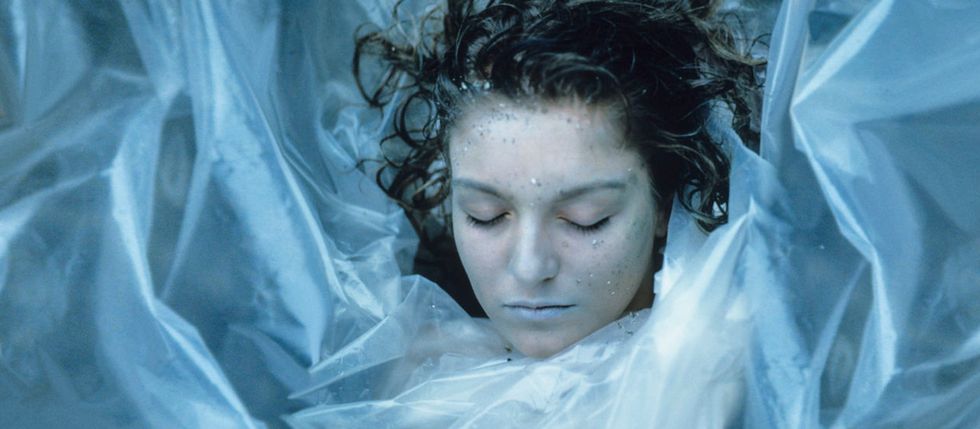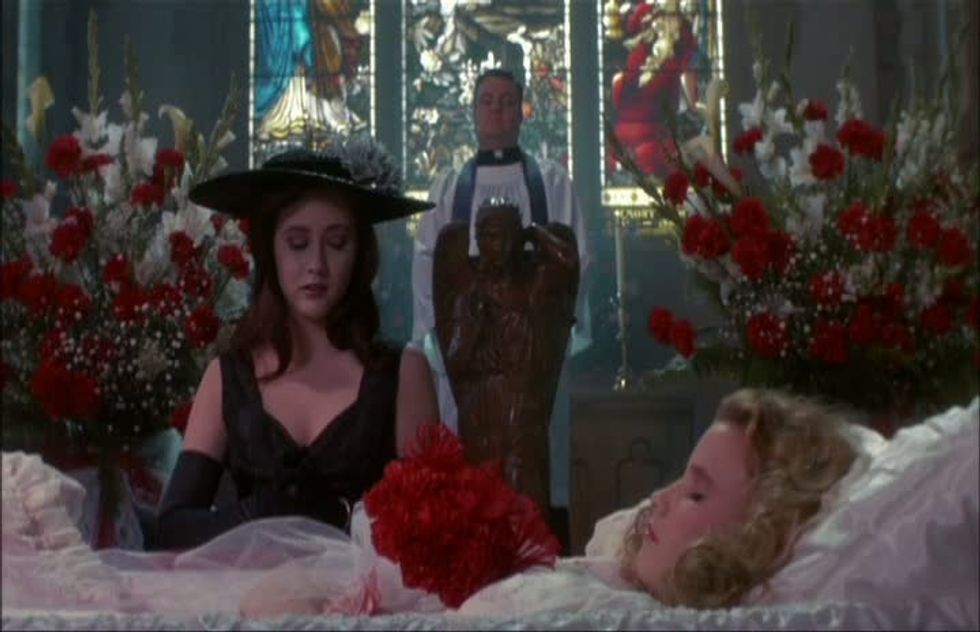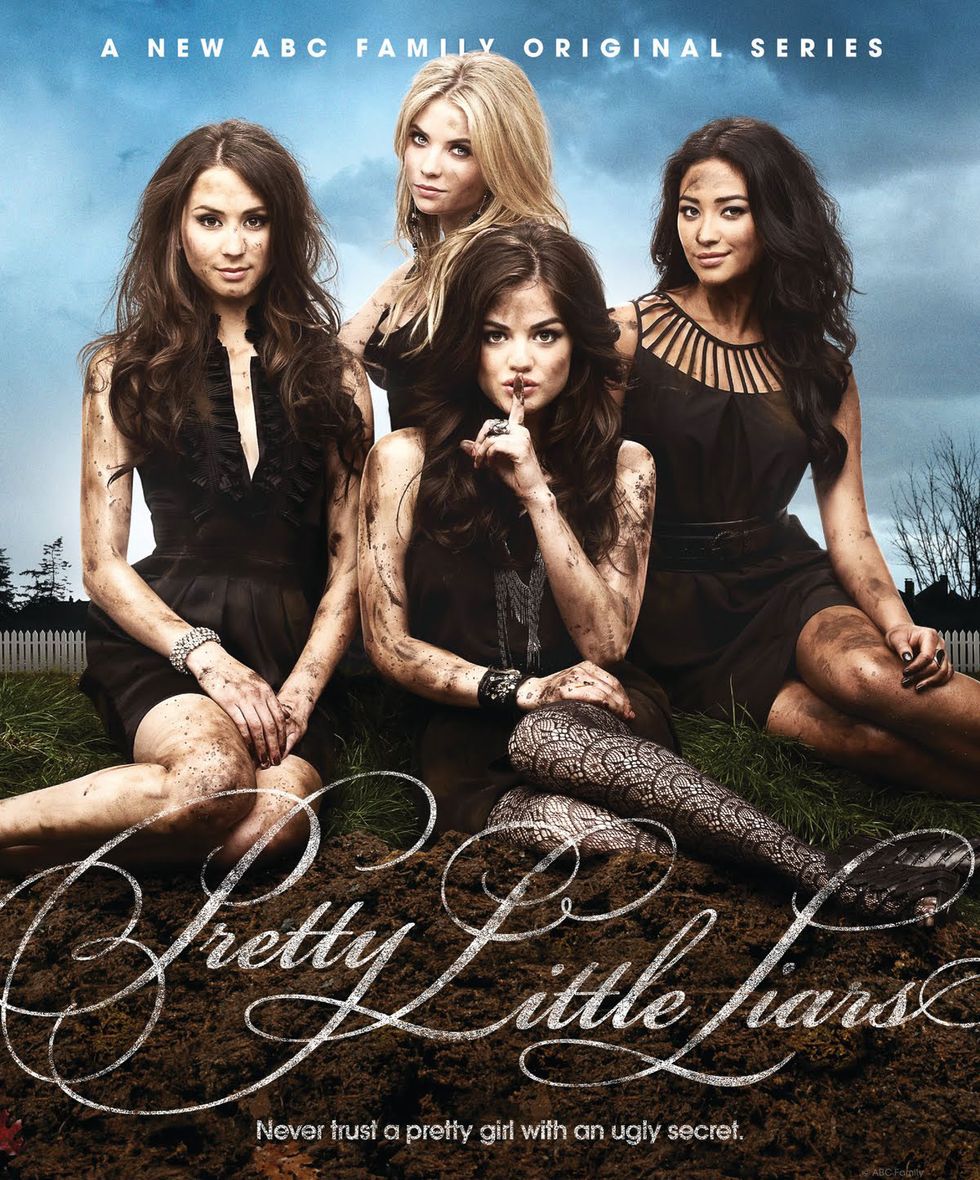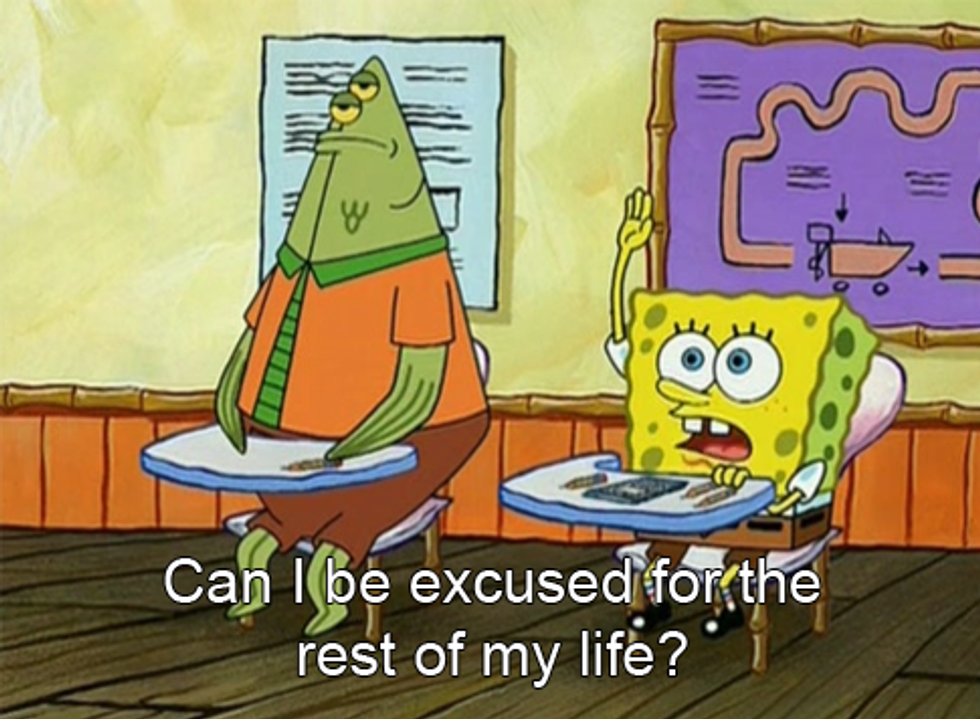“Live fast, die young, leave a beautiful corpse.”
—James Dean
If you were to ask someone off the street what the first things they think of when they hear the name Marilyn Monroe, nine times out of ten the first two answers would be that she was a legendary beauty and that she sadly died ‘before her time’ when she overdosed at the age of 36.
Her tragic demise seems to have only added to the actress’s glamorous legacy, spawning countless imitations and film adaptations, and eventually making her one of the most recognizable symbols of American culture. This transformation of Marilyn the person into Marilyn the symbol represents a troubling tendency of the public to fetishize the death of young, beautiful women into myths and fables. The starlet's struggles with depression and frustrations at not being taken seriously in Hollywood which may have contributed to a desperate suicide weren’t good enough. Somehow Marilyn’s pain became “our loss” and to this day people still mourn the misfortune at the waste of such a pretty face. The person was overshadowed by a legend saturated with prominent conspiracy theories and sex scandals that sought to uncover the “mystery” of her death. In the decades following Hollywood’s Golden Age, countless works of media have repeated the same narrative of the fallen beauty queen, drawing us in with haunting close-ups of their plump lips tinted an eerie blue and their shiny blonde curls matted with blood.
Our cultural obsession with what author Alice Bolin dubs “Dead Girl Shows,” may be seen as the fictional extension of society’s ongoing fascination with the idea of the innocent and fragile white, female victim. From JonBenét Ramsey’s dolled up childhood beauty pageant portrait splashed across grocery store tabloids to endless E! News close-ups of Natalie Holloway’s tanned and beaming senior yearbook photo, the news media has contributed to a phenomenon known as “missing white woman syndrome.” When these outlets devote a disproportionally high amount of coverage to the disappearances and murders of “white, wealthy, conventionally attractive” women, they are guilty both of fetishizing the image of the tragically brutalized damsel and of framing this group as ‘valuable front-page victims while dismissing others as disposable.” Societies with violence committed against beautiful women have also spilled over into our entertainment.
From "True Detective's"investigation into the gritty murder of a prostitute to the shocking discovery of a 17-year-old’s waterlogged corpse in the backseat of the car on "The Killing," countless dramas build seasons of suspense from the brutalized bodies of young women. The cult classic 1980s film "Heathers" is a dark romp starting with the murder of clique leader Heather Chandler by her former best friend. David Lynch’s now iconic 1992 noir series "Twin Peaks" begins with the plastic-wrapped corpse of small-town homecoming queen Laura Palmer. According to a recent "Entertainment Weekly" interview about his next project, a reporter asked if Lynch “were attracted to this because it involves the psychological torture of a beautiful young woman?’ And he said, ‘Yes.”
After "Twin Peaks" and the central mystery of “Who killed Laura Palmer?” became an enormous cultural phenomenon, a slew of spiritual successors attempted to follow in its footsteps. Early 2000s teen detective show "Veronica Mars" opened each episode with a shot of a doe-eyed blonde’s glassy gaze and bleeding body sprawled across the pavement while Veronica, the protagonist, narrates, “It’s been over a year since my best friend Lilly Kane was murdered.” The most recent “dead girl” to add to TV’s overwhelming blonde body-count is Alison DiLaurentis, the vanished Queen Bee on ABC Family’s hit "Pretty Little Liars," a show revolving around four girls trying to uncover the story behind Alison’s death while being repeatedly threatened, blackmailed, and harassed by an omniscient cyber-stalker. All four of these female characters have another common trait other than being beautiful, blonde, and dead. They’re vicious and blunt, intelligent and manipulative and above all completely aware of their status and power. They are villains forced into victimhood, sirens whose voices are brutally stolen and suffocated by men unable to cope with women who don’t adhere to the model of quiet and compassionate compliance. Each of these works gained popularity by exposing our own voyeuristic fascination with the tragedy of the beautiful, dead girl. In her 1980 publication "Powers of Horror" feminist literary critic Julia Kristeva examines the associations between humanity’s fascination with death and gore and the politics of individual identity. Kristeva draws comparisons with the image of the corpse with the greater idea of objectification, writing, “the corpse, the most sickening of wastes, is a border that has encroached upon everything. It is no longer I who expel, "I" is expelled. The border has become an object.” Each of these women doesn't only lose their lives, they lose their entire individual identity and are reduced both by the story and by the viewer into another body to be constantly examined.
The cast of "Heathers" is almost entirely female yet the murders that drive the plot are planned and committed by the film’s single main male character, the rebellious new kid JD. JD frames his plots to dispose of popular students as the actions of a martyr on a quest to improve society and win the affection of the misunderstood Veronica Sawyer. Yet, he repeatedly ignores Veronica’s own moral boundaries in favor of his own agenda by lying to her that he never actually meant to kill her classmates and manipulating her into believing that it was what she wanted all along. Its later revealed that JD’s anger stems from his father who blew up a building with his mother inside after she threatened to file for divorce. Thus, while JD claims to despise his dad, he repeats his misogynistic behavior by disposing of the misbehaving women who attempt to challenge him. The theme of patriarchal entitlement and the idea of women and children suffering for not being obedient to their father figures runs through the rest of these works as well. In a shocking, supernatural twist, "Twin Peaks" eventually reveals that Laura Palmer’s killer was her own father, who was possessed for years by a demon named Bob, who compelled him to repeatedly rape and abuse Laura during her childhood. "Veronica Mars"season one's mystery arc finally concludes with the reveal that Lilly’s murderer was her boyfriend’s abusive father Aaron Echolls who she had been secretly sleeping with.
In addition to the way the adults in these storylines promote the long-standing trope of a father’s obsession with controlling and restricting his daughter’s sexual behavior, parents in these shows also play the part of the final moral authority by imposing rigid, gendered social expectations onto each of these girls even after they’re no longer living.
As Bolin explains in an essay for the "Los Angeles Book Review," in media whose main plot is driven by the mysterious murder of a teenage girl, “the Dead Girl is not a “character” in the show, but rather, the memory of her is. Lilly Kane’s parents, prestigious CEOs of a multi-billion California software company, chose to hold a memorial ceremony to honor the one year anniversary of their daughter’s death complete with a Lilly Kane Memorial Fountain and the public showing a fantasy of their daughter as a pure and sweet straight-A student. The people who actually new Lilly in real-life such as her best friend and former boyfriend are outraged by this false, censored and sanitized version of who she was and sabotage the video with clips of Lilly’s true, flawed self, secretly drinking champagne in their homecoming limo and spontaneously skinny-dipping during a game of truth-or-dare. While parental figures and authorities may feel that they are they are protecting these dead girls by posing them as saints, what they’re really doing is re-writing their identities.
"Heathers" goes a step further in deconstructing the way society tends to idolize and romanticize the ideas of young death through publishing Heather Chandler’s suicide note in the high-school paper where she laments that no one knew her “real pain” and all the ways her harsh behavior was just disguising her inner insecurities. While the entire student-body gawks and cries at having lost such a deep and beautiful person and never truly knowing the real Heather before she was gone, the irony for the viewer is that Heather’s “soul” and hidden sensitive sides are all elaborate lies written by her murderers. Unable to control the sexuality and misbehavior of these teens while they were alive, they use their inability to fight back or speak up to completely reconstruct their memory. By clinging to this fantasy image of the ‘golden-girl,' what the adult characters are actually telling the audience is that no one would ever mourn the death of “slut” or a “bitch.” Therefore, they treat her lifeless body as a blank slate upon which anyone can drape the veil of a more acceptable narrative.
"Twin Peaks" creator David Lynch excuses the ugly reality of grown men exploiting underage girls by attributing Laura’s lifelong childhood trauma to a paranormal evil that regularly inhabited the body of her dad and forced him to molest her. Lynch said that he saw ‘Bob’ as a physical manifestation of the evils of child abuse who possess the spirit of men and makes them carry out these unspeakable acts. Therefore, telling the audience that these men are the true victims cannot be held responsible for their crimes and would never commit such atrocities through their own free will. This is a particularly harmful message when combined with the repeated framing of the dead girls as seductive temptresses who purposely lure these older men into infidelity with their dangerous feminine wiles and the common narrative that promiscuous women deserve to be sexually assaulted.
In every single one of these cases, the death of the girl is directly tied to a scene of her exhibiting her sexuality. While Veronica, the ‘hero’ in "Heathers," fights off the unwanted advances of her own date, Heather is isolated from her familiar social scene and sexually propositioned by her older, more-experienced partner despite her protests to stop and return to the party. In what is the film’s single moment of vulnerability for Heather, the college boy tells Heather that she looks “so hot tonight” and he “can’t control himself.” Heather eventually concedes and her head slides out of frame, an extreme dynamic shift from the earlier framing of her as centered, tall, and fully in control. The next jarring cut is of her spitting a glass of water at her own reflection in a bathroom mirror, ashamed of what she’s done. Thus, when Heather dies a single scene later by choking on a glass of drain cleaner, the viewer may be told to see this as a form of ironic punishment and a way to permanently wash out her mouth.
Similarly, both Lilly and Allison are repeatedly thrust into the role of the scheming Lolita who plays with the affections of much older men for their own amusement. In repeated flashbacks of a video of 14-year-old Alison taken by her college-age field hockey coach, she’s shown relationship removing a sweater and coyly asking the camera, “Want to see more? I know you want to kiss me.” Heather, Laura, Lilly, and Alison all understood that the only way they could gain power was through exploiting societies fears of their adolescent sexuality. When Ian later taunts Alison, calling her pathetic and threatening to end their relationship for another woman, she threatens to publically expose the recordings he made of her and tells him that “he’s going to jail.” In much the same vein, when Lilly Kane discovers her privacy was violated by a hidden sex tape Aaron Echolls took of them, she boldly tries to reclaim her agency by stealing the tapes to keep as personal blackmail. Furthermore, the frequency that the plot device of young girls being photographed and filmed against their consent appears again and again in this genre demonstrates the main concept of film scholar Laura Mulvey’s popular essay “Visual Pleasure and Narrative Cinema” which raised the idea of that Hollywood movies promote an incessant “male gaze” as part of a patriarchal society where the “‘pleasure in looking has been split between active/male and passive/female.'
Echoll’s attempts to intimidate Lilly into obedience, shouting and forcibly grabbing her arm and demanding, “I want those tapes, you stupid little bitch.” Rather than submit to his threats, Lilly continues to challenge his authority, defiantly responding that she’s not the stupid one and threatening to expose his crimes by sending the tapes to Access Hollywood. Terrified of this threat to his image, Echolls lashes out with brutal violence, backhanding her over the head with an ash tray so forcibly that Lilly’s skull is immediately shattered along with all evidence of their illicit, illegal affair. Like Eve biting from the apple, they are punished for their disobedience and knowledge. Their murders are all done out of a need to rob them of this power and condone them to eternal silence, so that they may never share the extent of what they know. Nowhere are the links between death as a method of making woman shut up and look pretty is in the very few seconds of "Pretty Little Liars" opening credits which feature the corpse of a former Queen Bee lying in her own coffin while her nails painted and lipstick applied by her dutiful clique. As each girl holds a single finger up to her mouth and gives a teasing “shh” the chirpy theme song teases, “Two can keep a secret if one of them is dead.”
Ultimately, the constant success of this peculiar genre speaks to our culture’s perverse and macabre fascination with the idea of the damsel in distress. To return again to Kristeva and the psychological notion of the ‘abject’ we are drawn to depictions of female figures who have been carved into soulless shells. “The corpse, seen without God and outside of science, is the utmost of abjection. It is death infecting life[…]Imaginary uncanniness and real threat, it beckons to us and ends up engulfing us.”
Therefore, the only way to fight back against the plague of Dead Girl Shows is to embrace the lively threats of flawed female characters and allow them to fight for their own lives rather than assign someone to solve their mystery for them. It’s a step that "Veronica Mars" creator Rob Thomas seems to already be taking with his latest project "iZombie," a CW series where quirky blonde med student Liv is resurrected from the dead after suffering a fatal fall during a boat party and uses her new undead psychic abilities to solve the murders of other victims. Perhaps one day and we can look forward to a new era of Hollywood shows and films where graveyards of brutalized blondes, pull themselves from their own coffins and seek their own retribution on the men who hurt them without ever once apologizing for their rage or being told to wipe the dirt from their faces.























